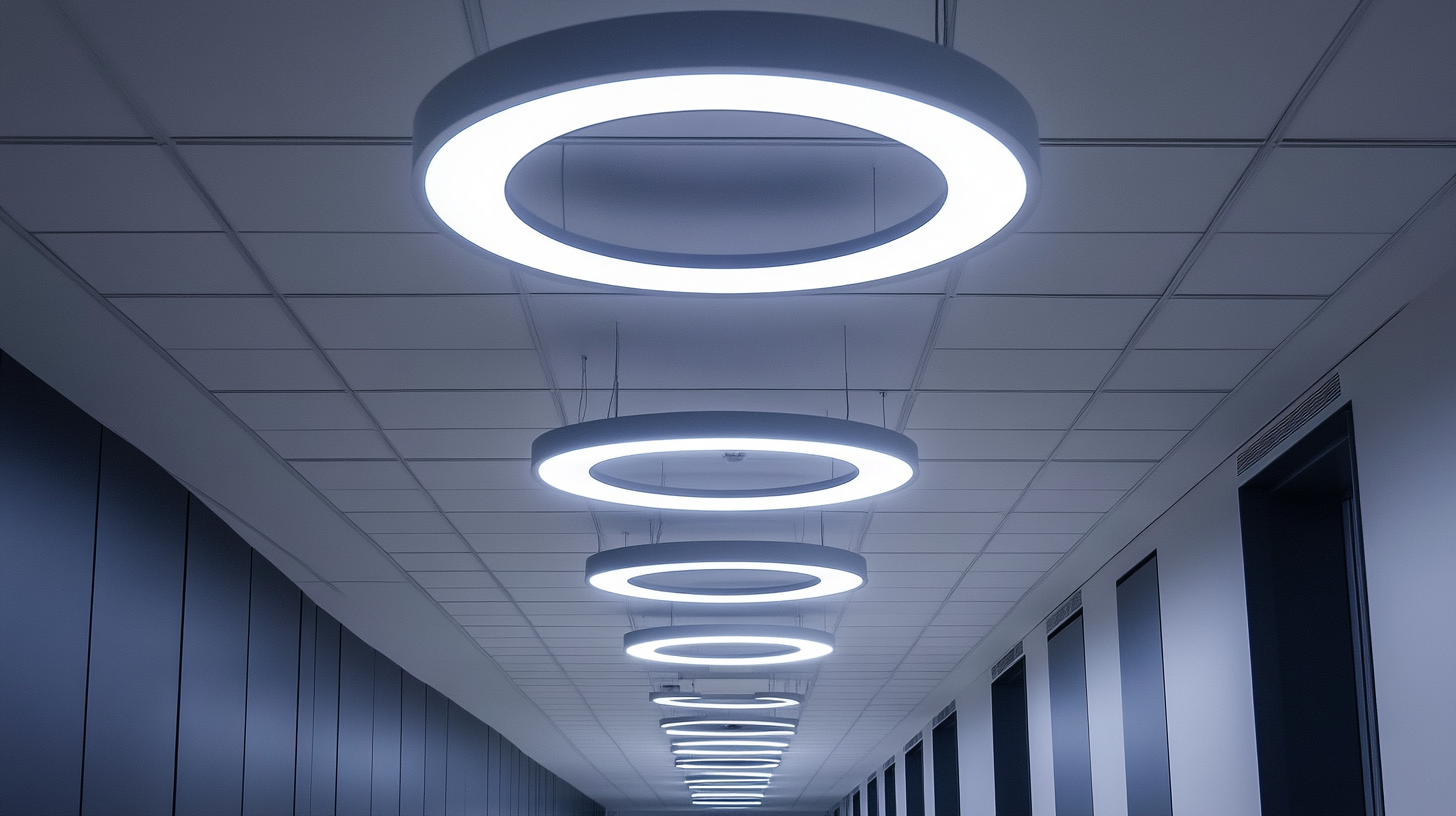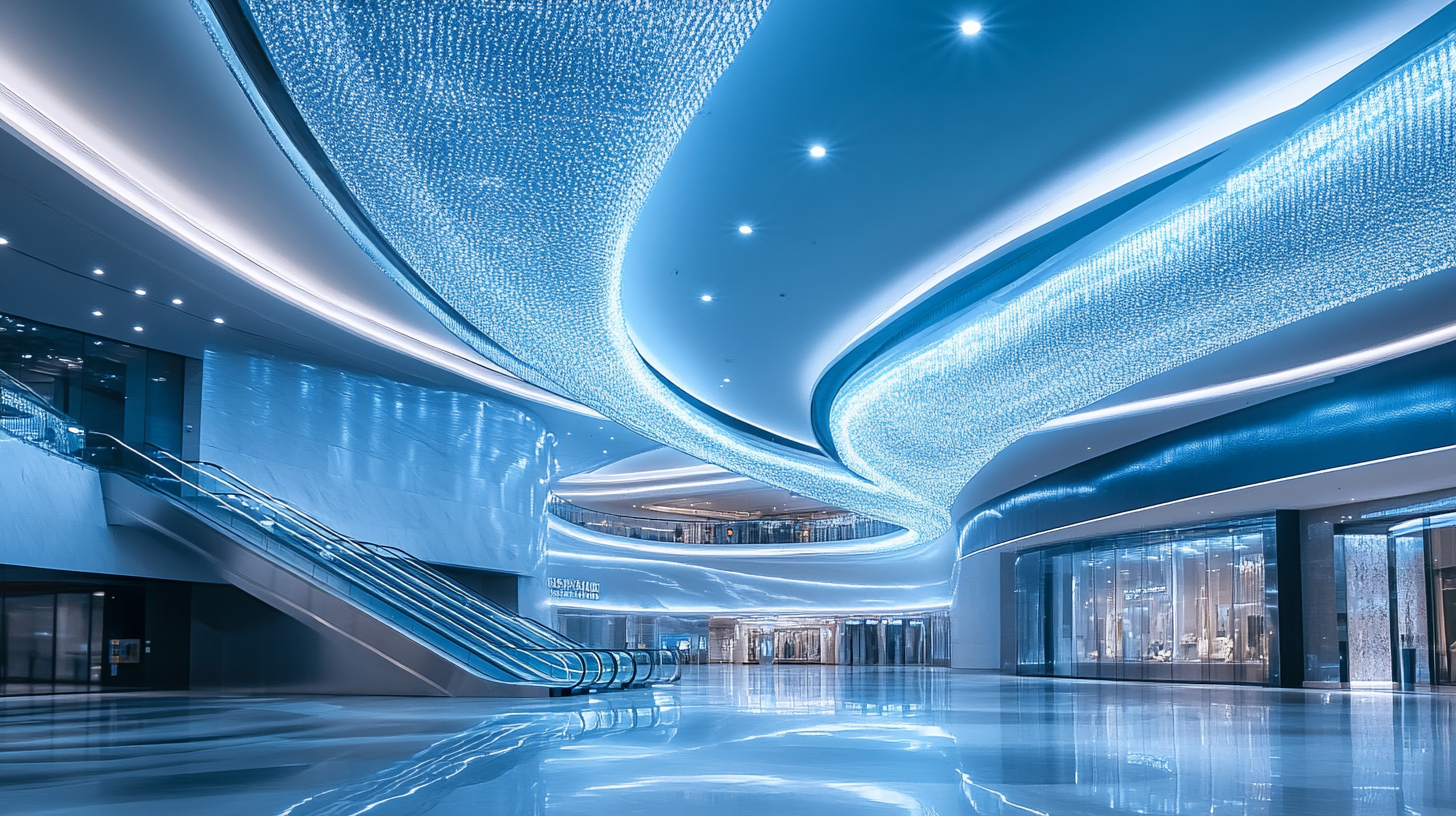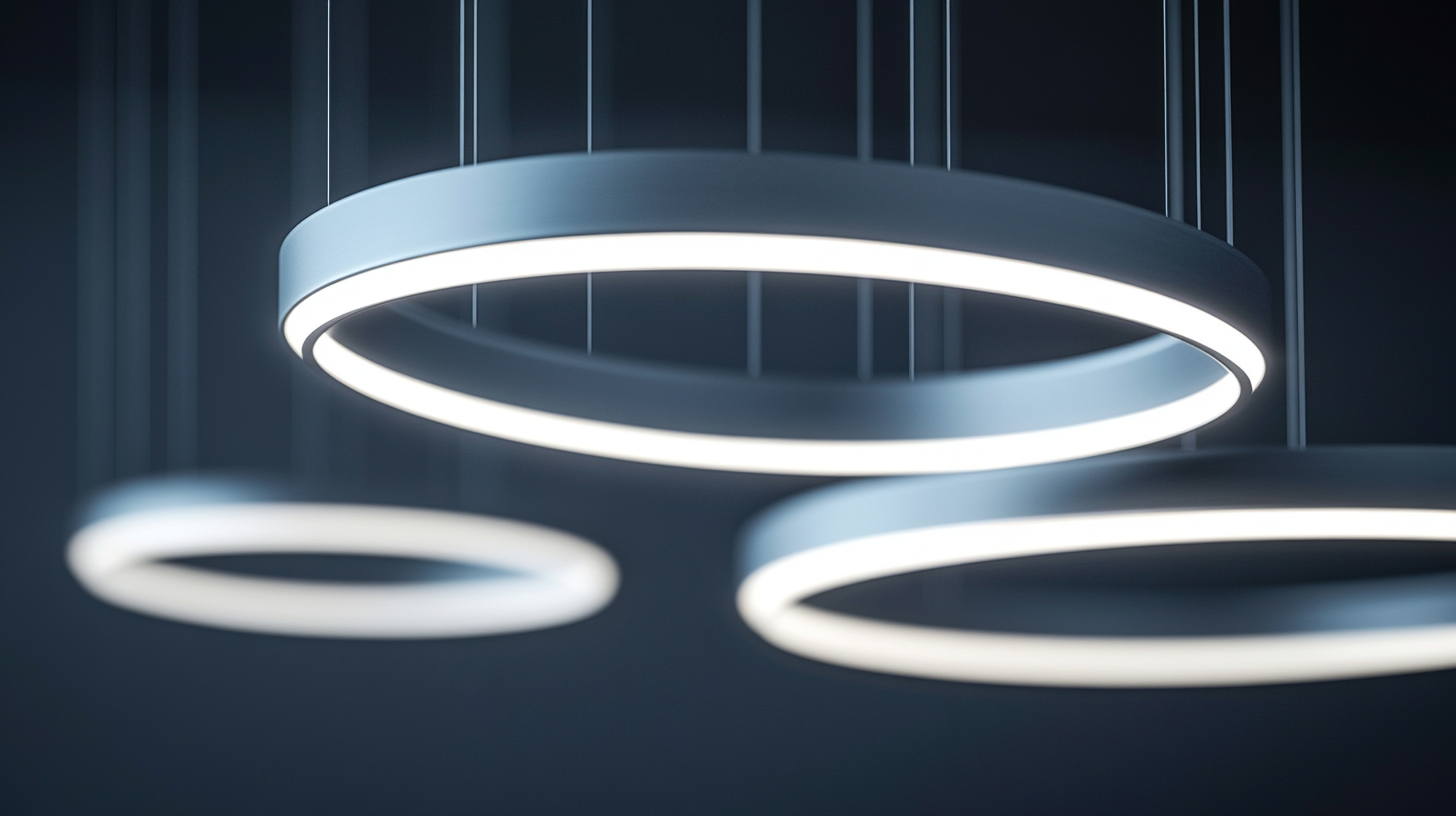Trends Shaping the Future of Commercial Lighting Fixtures in 2025
As we look ahead to 2025, the landscape of commercial lighting fixtures is poised for significant transformation driven by technological innovations and evolving market demands. According to a recent report from Markets and Markets, the global commercial lighting market is projected to reach $60 billion by 2025, growing at a CAGR of 7.6% from 2020. This growth is largely attributed to the increased adoption of energy-efficient lighting and smart building technologies which enhance sustainability and operational efficiency. Furthermore, the shift towards LED lighting has not only reduced energy consumption by an estimated 40-60% but also improved the quality of illumination in commercial spaces. As businesses continue to prioritize environmental sustainability and cost-effectiveness, understanding the trends shaping commercial lighting fixtures will be essential for industry stakeholders aiming to adapt and thrive in this evolving sector.

Emerging Technologies Revolutionizing Commercial Lighting by 2025
The commercial lighting industry is poised for a paradigm shift by 2025, driven by emerging technologies that promise to enhance efficiency, sustainability, and user experience. According to the latest research from Markets and Markets, the global smart lighting market is expected to grow from USD 13.4 billion in 2020 to USD 34.0 billion by 2025, at a compound annual growth rate (CAGR) of 20.5%. This surge is largely anchored in the increasing adoption of Internet of Things (IoT) devices, which enable real-time monitoring and control of lighting systems.
Moreover, advancements in LED technology are set to redefine commercial lighting fixtures. A report by Grand View Research indicates that the LED lighting market is projected to reach approximately USD 105 billion by 2025, driven by energy efficiency and longer lifespans compared to traditional lighting solutions. Smart LEDs, coupled with automation and AI-driven analytics, will not only reduce energy costs but also facilitate adaptive lighting solutions tailored to specific commercial environments.
Furthermore, sustainability will be at the forefront of commercial lighting innovations. The U.S. Department of Energy reports that widespread adoption of LED lighting could save about 348 terawatt-hours of electricity annually by 2030, equivalent to the electricity used by over 30 million households. As businesses increasingly prioritize environmental responsibility, integrating sustainable lighting solutions will become essential for commercial spaces, shaping the future landscape of lighting fixtures in our urban environments.

Sustainability Trends Influencing the Design of Lighting Fixtures
As we look toward 2025, the lighting industry is experiencing significant transformation driven by sustainability trends. Eco-friendly design principles are no longer just an option but a necessity for manufacturers of commercial lighting fixtures. Innovations in technology now allow for the creation of energy-efficient products that consume less power while delivering superior illumination. For instance, the integration of LED technology has revolutionized lighting solutions, offering extended lifespans and reduced energy costs. Companies are increasingly adopting materials that are recyclable and sourced sustainably, ensuring that their products leave a minimal environmental footprint.
Moreover, the design of lighting fixtures is evolving to reflect a commitment to sustainability beyond just functionality. Aesthetic choices are now influenced by eco-friendly practices, with designers incorporating natural elements and biophilic designs that promote well-being. This approach not only enhances the visual appeal of commercial spaces but also connects with consumers who prioritize sustainability in their purchasing decisions. As organizations seek to enhance their green credentials, we can expect a growing demand for lighting solutions that blend efficient technology with striking, environmentally responsible designs. This alignment of aesthetics and sustainability is set to define the future of commercial lighting fixtures.
Trends Shaping the Future of Commercial Lighting Fixtures in 2025
This chart illustrates the projected impact of key sustainability trends on commercial lighting fixtures by 2025. The data reflects the percentage of influence various factors will have on design choices.
The Role of Smart Lighting in Enhancing Commercial Spaces
As we approach 2025, the commercial lighting landscape is witnessing a revolutionary shift driven by smart lighting technologies. According to the latest findings from MarketsandMarkets, the global smart lighting market is projected to reach $36 billion by 2025, growing at a CAGR of 24% from 2020. This surge is primarily fueled by the increasing demand for energy-efficient solutions and the integration of IoT devices in commercial spaces.
Smart lighting systems not only offer enhanced control over illumination but also facilitate improved energy management and sustainability. For instance, a report by Grand View Research indicates that implementing smart lighting can reduce energy consumption by up to 60%. This significant reduction is vital for businesses aiming to lower operational costs while also minimizing their carbon footprint. Moreover, smart lighting can enhance the overall ambiance of commercial environments, promoting well-being and productivity among employees. Advanced features, such as adaptive lighting and automated schedules, create tailored experiences that meet the diverse needs of various commercial settings.
The role of smart lighting is increasingly integral to the design and functionality of modern commercial spaces. With the rise of connected technologies, businesses can now leverage data-driven insights to optimize their environments. A survey from the International Energy Agency highlights that companies employing smart lighting report up to 25% higher employee satisfaction and engagement levels. As we move forward, the fusion of technology and lighting will fundamentally reshape the way commercial spaces are experienced, making smart lighting not just an option but a necessity for forward-thinking businesses.
Trends Shaping the Future of Commercial Lighting Fixtures in 2025
As we move towards 2025, the integration of smart lighting in commercial spaces is transforming how these environments are perceived and utilized. This pie chart illustrates the percentage of various factors influencing the adoption of smart lighting technologies in commercial settings.
Design Aesthetics and Customization in Future Lighting Fixtures
As we look towards 2025, the landscape of commercial lighting fixtures is undergoing a remarkable transformation, driven largely by evolving design aesthetics and a strong demand for customization. Businesses are increasingly recognizing that lighting plays a crucial role in creating an inviting atmosphere and reinforcing their brand identity. This shift is pushing manufacturers to innovate, resulting in fixtures that not only illuminate but also enhance the overall design narrative of commercial spaces.
Customization is at the forefront of this evolution. Retailers, restaurants, and offices are seeking lighting solutions that reflect their unique style and purpose. The possibility of tailoring lighting fixtures—from shape and size to color temperature and brightness—enables businesses to curate an experience that resonates with their customer base. Advanced technologies, such as modular designs, are allowing for greater flexibility, enabling fixtures to be easily adapted or reconfigured as needs change. This trend towards bespoke lighting solutions ensures that commercial spaces remain dynamic and aligned with current design trends.
Moreover, aesthetics are becoming increasingly integral to the functionality of lighting fixtures. The fusion of art and technology is evident, with designers prioritizing visual appeal without compromising performance. Sleek, minimalist designs and the use of sustainable materials are gaining traction, resonating with modern sensibilities. The emphasis on aesthetics in lighting design not only serves practical purposes but also creates emotional connections, enhancing the overall ambiance and user experience within commercial environments.
Trends Shaping the Future of Commercial Lighting Fixtures in 2025
| Trend | Description | Customization Options | Design Aesthetics |
|---|---|---|---|
| Smart Lighting | Integration of IoT for automation and control | User-defined settings, colors and brightness | Sleek minimalist designs, modern aesthetics |
| Sustainable Materials | Use of recycled and eco-friendly materials | Options for natural finishes and textures | Organic shapes and earthy tones |
| Personalized Experiences | Tailored lighting experiences for different environments | Custom programmable functions and features | Artistic designs that reflect brand identity |
| Energy Efficiency | Focus on reducing energy consumption | Smart controls for optimal energy use | Elegant, unobtrusive fixtures |
| Flexible Lighting Solutions | Adaptable fixtures for multi-purpose spaces | Interchangeable components and styles | Versatile designs that suit various themes |
Market Demands Shaping the Development of Energy-Efficient Solutions
As we look ahead to 2025, the demand for energy-efficient solutions in commercial lighting fixtures is becoming increasingly critical. Businesses are not only seeking to reduce energy costs but are also under pressure to comply with stringent environmental regulations. This shift is prompting manufacturers to innovate and design products that not only offer superior energy efficiency but also align with sustainable practices. The integration of smart technologies—such as sensors and IoT connectivity—has emerged as a top priority, enabling real-time energy management and minimizing waste.
Moreover, businesses are becoming more aware of the aesthetic and functional aspects of lighting, influencing their purchasing decisions. Lighting is no longer merely a necessity; it is a central component of commercial spaces that can enhance productivity and create inviting environments. As a result, the development of fixtures that combine energy efficiency with modern design has gained traction. In this evolving landscape, companies that prioritize sustainable and stylish lighting solutions will likely lead the market, fulfilling both consumer demands and corporate responsibility goals.

Quality Commercial LED Lighting specializing in LED Tubes, LED Bulbs, LED Troffers, LED Door Kits, LED Retrofit Kits, LED Panels, LED Spot Lights, LED Wall Packs, LED Lamps, LED Drivers, LED Accessories, LED Lights, LED Sales, and LED Manufacturing. Headquartered in Atlanta, Georgia, USA.
